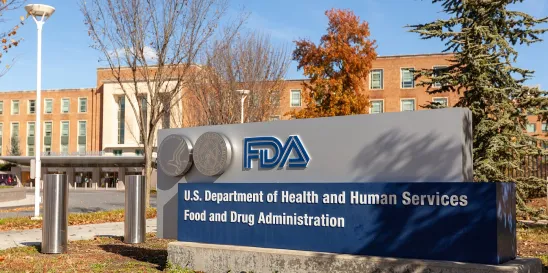Introduction
Most years are eventful for businesses regulated by the US Food and Drug Administration (“FDA”), and 2023 was no exception. 2024 promises more of the same – it being a Presidential election year, some FDA decisions (increased access to medications used to terminate pregnancy, to cite one obvious example) will feature prominently in the campaign. Democrats unequivocally intend to make reproductive rights a feature of President Biden’s re-election campaign. Presidential election years also tend to influence when and whether regulations (proposed and final) are issued, as the White House review of decisions by regulators gets enhanced political scrutiny, both before and after the election, particularly when there is a change in administrations.
To help you navigate the coming year, the Polsinelli FDA team compiled this curated look at what happened (and didn’t happen) and what we think might happen this year. We chose those actions and events of the past year and agenda items for this year to give our clients (and others) our perspective, borne of decades of engagement with FDA, on what mattered and why. This is not intended to be a comprehensive summary of everything FDA did or didn’t do or might or might not do in 2024; instead, we strive to give you insights beyond mere recounting decisions, regulations, and enforcement actions.
Our review is organized by product category. We first begin with a couple of overriding events. We encourage you to read our discussion beyond the product categories you are most interested in. We all tend to silo our interests and perspectives along product categories, but we find that a more holistic evaluation of FDA is more beneficial to those regulated by it.
Highlighted Topics
Front-of-Pack ("FOP") Labeling
Heavy Metals in Baby Food
Lead and Cadmium in Applesauce Pouches
Ultra-processed Food; Targeting "Big Food" like "Big Tobacco"
California Legislation to Ban Several Food and Color Additives; One-off or Future Trend
Litigation over abortion drugs; implications for drug approval process
Marketing Unapproved Uses of Approved/Cleared Medical Products
FDA approval of Florida plan to import drugs from Canada
FDA issues LDT Proposed Rule
End of Public Health Emergency and Transition Plan for EUAs
AI-Enabled Technology in Healthcare
Medical Device Recalls
Agency-Wide Topics
Retirements and a significant reorganization are the most newsworthy FDA events of the past year. Most notable is the retirement of long-time senior FDA official Janet Woodcock, most recently Principal Deputy Commissioner. Dr. Woodcock’s contributions to FDA and its role as medical product gatekeeper over nearly four decades cannot be overstated. Her forceful leadership and institutional memory will be missed. Dr. Woodcock never shied away from a challenge, most recently guiding the development and reorganization of the various activities at FDA that will soon constitute the new “Human Foods Program.”
It will be interesting to see how successful this reorganization and the new leadership of the Human Foods Program (EPA alum Jim Jones became the first Deputy Commissioner for Human Foods last fall) is at addressing long-standing and possibly intractable problems that have plagued FDA’s regulation of food safety and nutrition for decades. FDA’s human foods program needs new energy, and Deputy Commissioner Jones is well suited to provide it, but that is not all that is required. FDA’s food programs suffer from decades of resource shortages (exacerbated by not having product approval functions that lend themselves to substantial user-fee generated revenue) that impair the Agency’s ability to keep pace with the regulatory challenges of our contemporary food supply with extended supply chains which present multiple opportunities for hazards to intrude or be inserted (see our discussion about heavy metal issues in infant and baby food below). Challenges abound on the nutrition side as well, as FDA, the scientific and nutrition communities, consumer groups and industry struggle to identify the causes of an increasingly obese population and strategies that might reverse that trend (beyond GLP-1 dispensaries in grocery stores).
This term, three Supreme Court cases are being closely watched by FDA and its diverse stakeholders. The first case, Danco Laboratories, LLC v. Alliance for Hippocratic Medicine (consolidated with Food and Drug Administration v. Alliance for Hippocratic Medicine; discussed in more detail below), involved challenges to FDA’s approval of mifepristone, one of two drugs in a widely used regimen to terminate pregnancies (medication abortions account for about half of all abortions performed in the United States). The U.S. Court of Appeals for the Fifth Circuit denied challenges to FDA’s initial approval of mifepristone in 2000 but overturned actions FDA took in 2016 to increase access to the drug, including permitting its use later in pregnancy, allowing it to be mailed to patients and prescribed by medical professionals other than a doctor. The Supreme Court agreed to hear an appeal of the Fifth Circuit’s decision and placed a hold on the Circuit ruling, ensuring the continued availability of the drug while it considers the case. Oral argument in the Supreme Court is scheduled for March 26, 2024.
The case has obvious implications for access to abortion, which we need not address here. It also has far broader potential implications for drug regulation because the case involves a direct challenge to the conditions for approval and use of a prescription drug established by FDA. If the Supreme Court were to rule against FDA and Danco (the drug’s manufacturer), it would likely invite challenges to other FDA-approved medical products that prospective plaintiffs and or state governments might not favorably view. Pharmaceutical and biologics manufacturers rightly see the cases as profoundly threatening to the longstanding way pharmaceuticals are researched, developed, studied, marketed and approved. If lawsuits by third parties (advocates for particular social policies) and state governments can challenge the terms of FDA’s approval of medical products, which, in our view, could extend to Class III medical devices, we will have entered a new and unpredictable regulatory and business environment. It should not surprise anyone that briefs were submitted supporting FDA by more than 20 “food and drug law scholars” and, separately, by seven former FDA Commissioners.
We are also closely watching two Supreme Court cases that involve challenges to the Chevron doctrine, which derives from a case in which the Supreme Court held that reasonable interpretations of ambiguous laws by government agencies are entitled to deference. Critics of Chevron – and there are many – argue that deference puts too much power into the hands of “unelected bureaucrats” instead of Congress or the courts. Chevron deference sometimes produces outcomes that regulated entities do not like. A compelling statutory interpretation offered gives way to an agency’s reasonable interpretation when judicial review unconstrained by deference might produce a different outcome. If the Supreme Court were to overturn Chevron entirely (as opposed to seeking to clarify or constrain its reach), food, drug and medical device industry stakeholders would likely face an unprecedented period of regulatory uncertainty as long-standing interpretations of the Federal Food, Drug and Cosmetic Act would be vulnerable to a fresh challenge. A wholesale rejection of Chevron by the Supreme Court might not be the outcome most regulated entities want – more significant uncertainty about the meaning of laws and regulations resulting in a less predictable environment for new product development.
Food & Supplements
Front-of-Pack (“FOP”) Labeling
What’s the Issue?
In 2024, we expect FDA to continue active efforts to develop Front-of-Pack (“FOP”) labeling requirements for food packaging and anticipate the Agency will issue a proposed rulemaking before year-end.
Why Does it Matter?
FDA’s efforts to date have highlighted the chasm between the interests of various stakeholders. Consumer advocates want FDA to impose an FOP labeling scheme that includes a qualitative component to help guide consumer behavior. In contrast, the industry prefers a purely quantitative disclosure requirement, taking the view that anything more runs afoul of the First Amendment by imposing government “speech” on product labels.
In our view, the salient question is whether FDA can thread this needle. The principal challenge FDA faces is navigating between advocates for an FOP scheme that characterizes a product’s nutritional “value” and industry stakeholders that believe the appropriate role of FOP labeling is to highlight more effectively the quantitative nutrient content of products and that the First Amendment does not allow anything more.
Watch to see whether, in proposing an FOP regulation, FDA can find a path forward that satisfies consumer advocates without flatly running up against the First Amendment.
Heavy Metals in Baby Food
What’s the Issue?
California Assembly Bill 899, signed into law in October 2023, imposes new requirements aimed at protecting infants from the presence of heavy metals in baby food. As of January 1, 2024, baby food manufacturers for sale or distribution in California must test representative samples of their products for “toxic elements” (arsenic, cadmium, lead, and mercury). Beginning on January 1, 2025, manufacturers must make publicly available on their websites, for the duration of the shelf life of a baby food product, the name and level of each toxic element present in each “production aggregate” of the final baby food product. In addition, if a product is tested for a heavy metal that is subject to an FDA-established action level, regulatory level, or tolerance, the product label will be required to include a QR or other machine-readable code linking to a page on the manufacturer’s website that provides test results for that metal and a link to related FDA guidance.
Why Does it Matter?
Like California’s “Prop 65” law, AB 899 was born from a perception that the federal government has been too slow to address a health and safety hazard. The law (and others like it, such as California AB 1200, the “Safer Food Packaging and Cookware Act”) uses disclosure to impact corporate behavior directly. As has been the case with Prop 65, one can expect AB 899 to influence the behavior of manufacturers and embolden plaintiffs’ lawyers.
It remains to be seen whether AB 899 will spur other states and/or FDA to follow suit with additional action. Prop 65 prompted federal legislation to clarify that California’s law was preempted with respect to over-the-counter drugs. But neither Congress nor FDA took action concerning other regulated product categories, and no other state has adopted Prop-65-like legislation. Instead, Prop 65 has been allowed to function, in essence, as a surrogate for federal legislation – a tact that works because of the size of the California market.
In contrast, state statutes governing GMO disclosures proliferated nationwide, prompting an industry push for a federal statute instead of disparate state requirements that made uniform compliance difficult and that subjected companies to increasing threats of private litigation. This push ultimately resulted in passage of the National Bioengineered Food Disclosure Standard.
Concerning heavy metals in baby food, the question remains: Will we see state statutes proliferate to fill in gaps resulting from FDA’s leisurely pace on this issue, and will that (and perhaps resulting pressure from industry) compel FDA to act? Or will AB 899 prove to be more like Prop 65, which states have not seen a need to replicate?
Lead and Cadmium in Applesauce Pouches
What’s the Issue?
Through the diligent efforts of the North Carolina Department of Health and Human Services, regulators discovered that pouches of cinnamon-containing applesauce manufactured in Ecuador contained extremely high levels of lead, which had caused several toddlers in North Carolina to display symptoms of lead poisoning (a connection made by insightful North Carolina officials). After an investigation by FDA, which also uncovered high levels of cadmium, officials now believe the heavy metals in the applesauce came from economic adulteration – the addition of lead to the cinnamon to make it appear to be of higher quality. More than 125 cases of suspected lead poisoning have been identified.
Why Does it Matter?
Coming on the heels of issues with heavy metals in baby food, this incident with applesauce seemingly highlights weaknesses in FDA’s oversight of food safety, especially for infants and toddlers who are most vulnerable to the adverse effects of exposure to heavy metals. FDA has been widely criticized by food safety advocates and some Members of Congress for its particularly deliberate pace in setting action levels for heavy metals in food. The applesauce incident perhaps exposes additional vulnerabilities in food safety regulation.
Although all of the facts are not yet known, it appears that the facility in Ecuador that produced the applesauce pouches for export to the United States (Austrofood) was registered with FDA and subject to FDA jurisdiction, while the processor of the ground cinnamon, Carlos Aguilera, and the company (Negasmart) that supplied the cinnamon to Austrofood were not because neither exports food directly to the United States (and thus would not be required to register its facility).
There are several possible avenues for FDA enforcement against Austrofood. First, FDA’s investigation might determine that Austrofood’s compliance with the hazard analysis and risk-based preventive controls was inadequate because it failed to detect the heavy metal contamination of an ingredient it used. Another possible line of inquiry presumably relates to foreign supplier verification. It is not known from publicly available information who is the US owner or consignee of the applesauce products (FSVP importer). Still, we would be surprised if that entity’s compliance with the FSVP requirements is not under scrutiny.
There are already calls for enhanced FDA enforcement of imported foods, especially those intended for infants and young children. In the coming months, we expect consideration to be given to whether FDA should mandate finished product testing for heavy metals of food intended for infants and young children, perhaps along the lines of California AB 899. Other states are considering similar legislation.
Ultra-processed Food; Targeting “Big Food” like “Big Tobacco”
What’s the Issue?
There is a concerted effort underway to demonize “ultra-processed food” in the same way that advocates attacked tobacco companies, using virtually every tool at their disposal, from creative interpretations of the Federal Food, Drug and Cosmetic Act, scientific papers and presentations to lobbying of the Dietary Guidelines Committee. The food industry’s antagonists plan to take a long view, as they did with tobacco. Readers will recall that nearly 15 years passed from the FDA’s proposal to regulate tobacco as a “drug delivery device” in 1995 to the President’s signature on the Family Smoking Prevention and Tobacco Control Act in 2009, which gave the FDA that authority.
Food industry antagonists are gearing up to make Ultra-processed the “fall guy” for the increased incidence of a variety of health conditions, including obesity, diabetes and cardiovascular disease. (See here, for example) Foods will be attacked because they have lengthy ingredient lists (argued to be one of the “markers” of an ultra-processed food), contain ingredients derived from long-standing staples of the diet (corn, for example) that have allegedly been manipulated through multiple processing techniques (enzymes, heat, pressure, for example) so that the resulting ingredient bears no relationship to the staple food from which it came. Food industry antagonists are actively seeking creative interpretations of the provisions of the Federal Food, Drug and Cosmetic Act that address food ingredient safety, seeking to build an argument that multiple manipulations of a staple food to produce a functional ingredient should result in enhanced scrutiny by FDA because the derived ingredient should not be assumed to be GRAS.
Finally, FDA Commissioner Califf recently weighed in, saying that FDA needs to "figure out” ultra-processed foods.
Why Does it Matter?
We expect a multi-faceted attack on “ultra-processed foods,” with calls for reexamination of the regulatory status of ingredients commonly used in ultra-processed foods, assertions that ultra-processed foods are adulterated, and petitions seeking warning labels on ultra-processed foods. Ultra-processed foods are on the Dietary Guidelines 2025 agenda (one of the systematic review questions is: “What is the relationship between consumption of dietary patterns with varying amounts of ultra-processed foods and growth, body composition and risk of obesity?”)
Food companies should prepare for a long haul with plenty of ups and downs and no shortage of negative publicity. In the end, we don’t expect food industry antagonists to succeed like they did with tobacco.
California Legislation to Ban Several Food and Color Additives; One-off or Future Trend?
What’s the Issue?
On October 7, 2023, California Governor Gavin Newsom signed into law AB 418, known as the California Food Safety Act (FSA), a first-of-its-kind legislation that prohibits the use of four commonly used food additives in the manufacture, sale, or distribution of food (including dietary supplement) products in California. The law, which goes into effect as of January 1, 2027, would prohibit the use of brominated vegetable oil (BVO), potassium bromate, propylparaben and red dye 3 (commonly found in many candy and juice products), claiming that such additives are linked to serious adverse health effects, such as cancer, nervous system damage and hyperactivity. A fifth additive, titanium dioxide (commonly found in many popular candy products) was initially in the bill but was removed after lobbying from industry stakeholders. While the additives in FSA are banned or limited in certain foreign jurisdictions or by some retailers, FDA has continued to permit their use, despite having stated an intention to ban or restrict their use. FDA’s long-delayed attention to these additives fueled state interest in acting.
Why Does it Matter?
Since the California law was enacted, other states, including Illinois and New York, have begun earnestly considering laws restricting these additives' use. It is somewhat remarkable that three Democratic states are leading the way on state laws to restrict the use of certain food ingredients during a Democratic administration. One can only conclude that frustration with FDA’s pace when regulating food ingredients is widespread.
The FSA continues a recent trend of State legislatures considering state-specific laws related to food safety, which, while aimed at protecting consumers of those states, critics argue are uninformed and create an undue regulatory burden on companies likely to be challenged. For example, California, Illinois, Maryland, Missouri and Rhode Island all contemplated prohibiting the sale of “weight loss” and other supplement products to consumers under the age of 18. Meanwhile, a similar New York State law recently signed by Governor Kathy Hochul purports to prohibit the sale of certain supplements to consumers under the age of 18. The New York law is being challenged in a lawsuit by the Natural Products Association (NPA) on the grounds that the law is unconstitutional, preempted by federal law and will lead to confusion and improper or capricious application of law. (Note: Polsinelli is one of the law firms representing NPA in the lawsuit.)
Do the California and New York laws portend more active state engagement in food regulation and, perhaps, a re-ordering of federal-state relationships?
In the coming year, food and supplement manufacturers must be vigilant as they navigate the increasingly complex federal and state regulatory schemes.
Drugs
Litigation over abortion drugs; implications for drug approval process
What’s the Issue?
As noted above, the two cases pending before the Supreme Court present a clash between abortion politics and FDA’s drug approval authority. The cases have attracted much attention from FDA stakeholders as a challenge to FDA’s decision-making authority regarding its drug approval process.
Why Does it Matter?
The mifepristone cases expose the dissonance between new state authority to regulate, restrict, or ban abortion post-Dobbs and FDA’s long-standing authority to determine if a drug is safe and effective under its proposed conditions of use. Court challenges to drug approvals, especially by third parties with questionable standing, create a new set of risks for pharmaceutical and biologics companies who are alarmed by the threat. Medical device manufacturers should be closely watching these cases as well. The risk of a party suing to invalidate or block approval of new drugs skews the industry’s risk analysis. That, coupled with the potential of state-imposed restrictions on FDA-approved drugs and biologics in place of a single national standard established by the terms of FDA’s approval, is unnerving to the broader healthcare community as it could alter incentives for drug development. New drug development prospers because drug companies clearly understand what the FDA requires for approval. Judicial intervention in the drug approval process unavoidably substitutes uncertainty for clarity.
Marketing Unapproved Uses of Approved/Cleared Medical Products
What’s the Issue?
In October 2023, FDA issued draft guidance about the types of communications medical product manufacturers (applicants, sponsors, requestors, manufacturers, packers, distributors, licensees of such persons, or any persons communicating on behalf of these entities) can provide to health providers concerning unapproved uses of approved/cleared medical products. Medical products include medical devices, biological products, drugs for human use, and animal drugs. Numerous First Amendment challenges to FDA’s restrictions on promotions related to off-label uses led FDA to be more permissive of what companies can share –medical or scientific articles or company-prepared presentations – about off-label uses. The guidance sets forth a new approach in the use and promotion of scientific information by firms, coined “scientific information on unapproved uses” (“SIUU”).
Why Does it Matter?
Federal law prohibits introducing—or causing the introduction of—medical products into interstate commerce that fail to comply with applicable premarket requirements or are otherwise misbranded or adulterated, including introducing (or causing the introduction) into interstate commerce a medical product that is intended for a use that has not been approved or cleared by FDA. Or simply, healthcare industry stakeholders are prohibited from marketing or promoting authorized medical products for uses not yet approved by the FDA, aka “off-label” promotion.
Under the new draft guidance, scientific information on unapproved uses of a medical product may be shared by firms with other healthcare providers if the draft guidance requirements are followed. This includes (but is not limited to) the form of presentation materials, documentation of sources and avoidance of aggressive, persuasive marketing techniques. It remains to be seen, where these lines will be drawn. To illustrate its enforcement scope in light of the new guidance, FDA stated “FDA does not intend to use such communication standing alone as evidence of a new intended use.” Firms could share scientific information on unapproved uses without fear of FDA enforcement, but need to be mindful of other activities, when coupled with these communications, could lead to FDA enforcement activities.
In sum, the healthcare industry may now engage with a variety of healthcare industry stakeholders regarding medical products approved uses and unapproved uses, as long as the latter only utilizes scientific information about unapproved uses as laid out in the FDA’s draft guidance. Comments on the draft guidance were due December 26, 2023. We expect FDA to revise, and one hopes, clarify, the more ambiguous areas of the guidance.
FDA Authorizes Florida Plan to Import Drugs from Canada
What’s the Issue?
Various consumer groups, as well as several notable politicians, have long argued that allowing the importation of prescription drugs from Canada would facilitate access to lower-priced drugs for many Americans. The pharmaceutical industry has long been opposed to this as has FDA.
On January 5, 2024, FDA authorized Florida to import certain prescription drugs from Canada under its Section 804 Importation Program (“SIP”). Florida is the first state to receive authorization from FDA. To obtain FDA authorization, Florida had to demonstrate that its importation program will significantly reduce the cost of eligible prescription drugs to the American consumer without posing additional risk to the public’s health and safety. Florida claims the program will save it $183 million in the first year, which it has committed will go to the state’s Medicaid program.
Why Does it Matter?
FDA authorized Florida’s proposed drug importation program for two years. Florida may not start importing prescription drugs without obtaining FDA approval of a Pre-Import Request for each prescription drug it wishes to import. Additionally, Florida must conduct post-import surveillance such as additional quality testing for authenticity, degradation and other compliance standards (including labeling). Of note, “foreign sellers” must be registered with FDA before importation requests may be processed.
It remains to be seen whether Florida’s authorization is merely a political victory (both for Florida and the Biden Administration since both can claim to be reducing high prices for prescription drugs) or a step in the direction of lowering drug costs for some drugs. Multiple obstacles remain as PhRMA may challenge the authorization. Canada may seek to impede the flow of drugs from it to the US, or Florida may find the process of getting pre-import requests approved and conducting the quality testing is more than it bargained for.
Other states are certainly watching the Florida experiment and are likely to seek FDA approval.
Medical Devices
FDA Issues LDT Proposed Rule
What’s the Issue?
On October 3, 2023, FDA issued the long-awaited Proposed Rule for Laboratory Developed Tests (LDTs) that would end FDA’s long-standing enforcement discretion for in vitro diagnostics that are developed within a single laboratory. The proposed rule is the latest development in a decades-long regulatory and legislative battle over how these tests should be regulated. If finalized, the Proposed Rule would create the framework for FDA to finally regulate LDTs as medical devices as it does with other in vitro diagnostics.
Why Does it Matter?
The comment period ended on December 4, 2023, with over 6,700 comments submitted, demonstrating how contested the rulemaking process is likely to be. In the coming year, we anticipate intense lobbying efforts from stakeholders on both sides of this contentious issue that are likely to not only challenge FDA’s oversight of LDTs but are also likely to take issue with attempts to regulate LDTs through rulemaking as opposed to legislation. LDT proponents believe CLIA-certification of labs provides sufficient federal oversight of LDT development and usage by the Centers for Medicare & Medicaid Services, and therefore further regulation by FDA is unwarranted. Medical device manufacturers advocate for a “level playing field” but many believe such an extension of oversight authority requires a statutory change. It is virtually certain that a final rule, assuming one is issued, will be challenged in court. We believe, therefore, that implementation of a final rule is years away. Congress tends to stay away from taking on issues being litigated in the courts. When one of the litigants, however, is FDA, then perhaps the Administration (if and only if it remains the Biden Administration) would there be an effort to legislate a change while litigation is pending. The additional wrinkle in such an effort, of course, is the very thin majorities in both the House and Senate, making it very difficult to get any significant legislation passed. If one were to bet, maintenance of the status quo appears safest.
End of Public Health Emergency and Transition Plan for EUAs
What’s the Issue?
Anticipating the May 11, 2023, end to the COVID-19 Public Health Emergency, FDA released two guidance documents in March 2023 that established a framework for transitioning medical devices with Emergency Use Authorizations (EUAs) to full clearances or approvals (EUA Guidance) or fell within certain enforcement policies issued to support our Nation’s response to the COVID-19 pandemic (Enforcement Policy Guidance). For devices marketed under a COVID-19 enforcement policy, FDA established a three-phase transitional plan starting on May 11, 2023, and ending on November 7, 2023, in which FDA withdrew its enforcement policies.
Why Does it Matter?
Manufacturers are now expected to have all applicable marketing submissions accepted for review by FDA and comply with the general controls of the Federal Food, Drug and Cosmetic Act, including Quality System Regulations, labeling and UDI requirements. Per the EUA Guidance, manufacturers with a device enjoying EUA status will have 180 days to submit a marketing application, e.g., 510(k), once HHS publishes a Federal Register notice of termination of its authority to issue EUAs. HHS has yet to publish a termination notice and has not provided any indication as to when it will do so. If not already started, manufacturers of EUA devices planning to seek marketing authorization for their devices should begin the process of preparing their submissions as soon as possible to avoid being caught flat footed.
AI-Enabled Technology in Healthcare
What’s the Issue?
On October 30, 2023 President Biden issued an Executive Order (EO) on the Safe, Secure, and Trustworthy Development and Use of Artificial Intelligence, which establishes a roadmap for the regulation of artificial intelligence (AI) in various industries, including healthcare. As part of the EO, the HHS secretary is directed to establish an AI Task Force, and within one year, develop a strategic plan that includes policies and frameworks on responsible deployment and use of AI and AI-enabled technologies.
HHS already began its formal regulation of AI through rulemaking concurrently with the issuance of the EO. On January 9, 2024, the Office of the National Coordinator for Health Information Technology (ONC) published its final rule on Health Data, Technology, and Interoperability: Certification Program Updates, Algorithm Transparency, and Information Sharing. The regulation creates new transparency and risk management expectations for AI/machine learning (ML) technologies that aid decision-making in healthcare. Within the rule, ONC defines AI/ML technologies as “predictive decision support interventions (DSIs)” and requires developers that use DSIs within certified health IT to provide end users with sufficient technological performance information in the form of source attributes to aid users in evaluating whether the technology is fair, valid, effective and safe.
Why Does it Matter?
The EO and HHS Rule come on the heels of FDA’s October 19, 2023, update of 171 AI/ML medical devices that were added to FDA’s list of 600-plus AI/ML-enabled medical devices that are marketed in the United States. As noted in FDA’s update, AI devices began to erupt on the market in 2020 and the number of these devices continues to grow each year. As a result, we can expect regulations and policies surrounding AI/ML-enabled technologies will continue to be a focus for both FDA and HHS in the coming year. As commenters noted in the proposed HHS rule, there is concern that HHS’s rule could implicate Clinical Decision Support Software that falls within FDA-regulated medical devices, which may have already been cleared, approved, or otherwise authorized for marketing within the United States. As AI/ML technology continues to be integrated into all facets of health care operations, we can expect industry stakeholders will be monitoring these overlapping jurisdictions and how FDA and HHS ultimately reconcile those concerns.
Medical Device Recalls
What’s the Issue?
In December, U.S. Senators Dick Durbin and Richard Blumenthal sent a letter to the Government Accountability Office asking the office to re-examine FDA’s oversight of medical device recalls, citing a media investigation surrounding the June 2021 Philips Respironics recall that is still ongoing. The recall involved millions of sleep apnea machines and mechanical ventilators following a discovery that the sound abatement foam in some of the devices could deteriorate and be inhaled. According to media reports, Philips withheld the problem from FDA for years before reporting the situation and eventually recalling products. The media also reported that FDA missed several opportunities to mitigate the risks of the problem.
Why Does it Matter?
The inquiry into FDA’s role in the recall has the potential to lead to congressional oversight hearings and possible regulatory and/or legislative change with the way FDA and manufacturers handle recalls and corrective actions in the device industry. Medical device manufacturers, and all medical product manufacturers, should keep an eye on this issue as it could have implications on recall frameworks down the road. In the near term, congressional hearings may cause the very type of uncertainty that can be bad for regulated industry.








 />i
/>i

